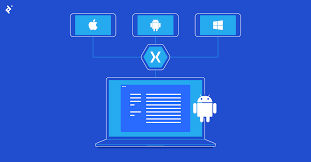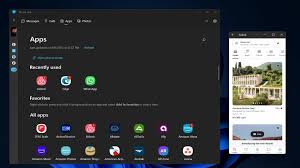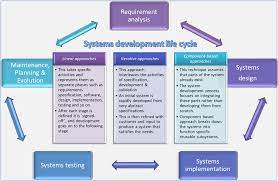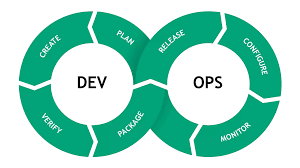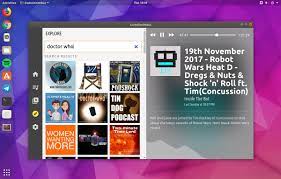Empowering Developers: Building the Future of Technology
The World of Developers
Developers are the architects of the digital world we live in today. They are the creative minds behind the websites we visit, the apps we use, and the software that powers our daily lives. From coding to testing, developers play a crucial role in shaping our technological landscape.
Types of Developers
There are various types of developers, each specializing in different areas:
- Web Developers: These developers focus on creating websites and web applications using languages like HTML, CSS, and JavaScript.
- Mobile App Developers: They design and build applications for mobile devices such as smartphones and tablets.
- Software Engineers: Software engineers develop desktop applications, operating systems, and other software products.
- Data Scientists: Data scientists analyze and interpret complex data to help businesses make informed decisions.
- Game Developers: Game developers create interactive games for various platforms, blending art and technology.
The Developer’s Toolkit
To bring their ideas to life, developers rely on a toolkit that includes programming languages, frameworks, libraries, and tools. Some popular languages among developers include:
- JavaScript
- Python
- Java
- C++
- Ruby
The Future of Development
The field of development is constantly evolving with new technologies emerging every day. Artificial intelligence, blockchain, augmented reality – these are just a few areas where developers are making significant strides. As technology continues to advance, developers will continue to push boundaries and innovate for a better tomorrow.
In conclusion, developers are at the forefront of innovation in the digital age. Their passion for problem-solving and creativity drives progress in technology and shapes the world we live in today.
7 Essential Tips for Developers: Boost Your Skills and Thrive in the Industry
- Stay updated with the latest technologies and trends in the industry.
- Practice coding regularly to improve your skills and problem-solving abilities.
- Collaborate with other developers to learn from each other and work on projects together.
- Document your code to make it easier for yourself and others to understand and maintain in the future.
- Test your code thoroughly to catch bugs early on and ensure its functionality.
- Seek feedback on your work to identify areas for improvement and grow professionally.
- Take breaks when needed to avoid burnout and maintain a healthy work-life balance.
Stay updated with the latest technologies and trends in the industry.
Staying updated with the latest technologies and trends in the industry is essential for developers to remain competitive and relevant in today’s fast-paced digital landscape. By keeping abreast of new tools, languages, and methodologies, developers can enhance their skills, improve their efficiency, and stay ahead of the curve. Continuous learning and adaptation to emerging trends not only broaden their knowledge but also enable them to deliver cutting-edge solutions that meet the evolving needs of clients and users. Embracing lifelong learning ensures that developers remain valuable assets in the ever-changing world of technology.
Practice coding regularly to improve your skills and problem-solving abilities.
To enhance your proficiency and problem-solving capabilities as a developer, it is crucial to engage in regular coding practice. By consistently working on coding challenges and projects, you not only sharpen your technical skills but also cultivate a strategic mindset for tackling complex problems efficiently. Practice not only hones your coding abilities but also fosters creativity and resilience in overcoming obstacles, essential qualities for success in the dynamic field of development.
Collaborate with other developers to learn from each other and work on projects together.
Collaborating with other developers is a valuable tip that can greatly enhance one’s skills and knowledge in the field. By working together on projects and sharing insights, developers have the opportunity to learn from each other, exchange ideas, and tackle challenges collectively. This collaborative approach not only fosters a sense of community within the developer community but also promotes continuous learning and growth, ultimately leading to the development of innovative solutions and stronger professional relationships.
Document your code to make it easier for yourself and others to understand and maintain in the future.
Proper documentation of code is essential for developers to enhance understanding and facilitate future maintenance. By documenting code effectively, developers not only make it easier for themselves to revisit and modify their work but also enable others to grasp the logic and functionality of the codebase. Clear and concise documentation serves as a roadmap that guides developers through the intricacies of the code, ensuring smoother collaboration and efficient troubleshooting. Embracing thorough documentation practices is a valuable habit that contributes to the longevity and sustainability of software projects.
Test your code thoroughly to catch bugs early on and ensure its functionality.
Testing your code thoroughly is a crucial step in the development process for developers. By conducting rigorous testing, developers can identify and rectify bugs early on, preventing them from causing more significant issues down the line. Thorough testing also ensures that the code functions as intended, delivering a high-quality product to users. Emphasizing testing not only enhances the reliability of the software but also saves time and resources by addressing potential issues proactively.
Seek feedback on your work to identify areas for improvement and grow professionally.
Seeking feedback on your work is a crucial step for developers to identify areas for improvement and grow professionally. Constructive feedback from peers, mentors, or clients can provide valuable insights that help developers enhance their skills, refine their techniques, and stay current with industry standards. Embracing feedback with an open mind not only fosters personal growth but also cultivates a culture of continuous learning and improvement within the development community.
Take breaks when needed to avoid burnout and maintain a healthy work-life balance.
It is crucial for developers to prioritize their well-being by taking breaks when necessary to prevent burnout and uphold a healthy work-life balance. Engaging in regular breaks not only rejuvenates the mind and body but also enhances productivity and creativity. By recognizing the importance of self-care and maintaining a balanced lifestyle, developers can sustain their passion for coding and problem-solving while ensuring long-term success in their careers.





